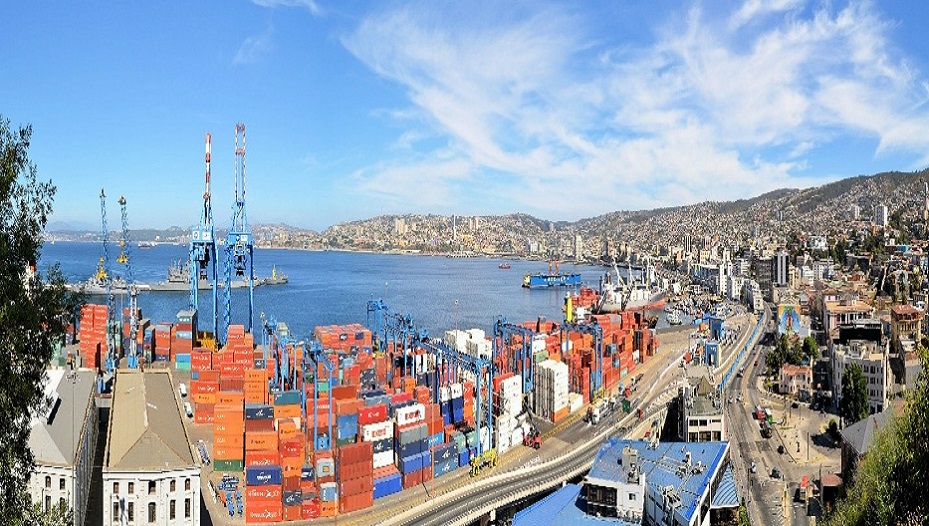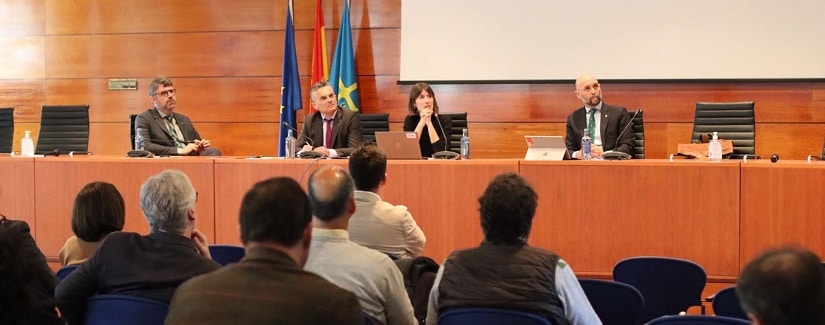To talk now about the Latin American port sector is to talk about the future. Specifically, the ports are facing a significant challenge in technological evolution, seeking to overcome the digital gap that separates them from the leading ports of the world. Jorge Durán, head of the Secretariat for the Inter-American Committee on Ports (CIP), talks to us about the roadmap for the leading institutions in the region for achieving a competitive, safe, sustainable, and inclusive ports system.
The Organization of American States (OAS), within the area of comprehensive development, includes the Inter-American Committee on Ports (CIP), which, as a governmental forum, includes all National Port Authorities from the OAS Member States and over 50 members from the private and international sector. “This represents a wide variety, not only regionally but also in terms of modes. For example, Mexico has just transferred all ports to the Secretariat of the Navy, which has brought in new military points of contact, admirals, etc.,” explains Jorge Durán, head of the Secretariat for the CIP, who adds that the main objective is to achieve a competitive port sector that is safe, sustainable, and inclusive. In addition, given the institution’s limited resources, they face the challenge of “strengthening the capabilities of port institutions in the member countries through training human capital to the highest level. In this area, for example, last year we offered 403 grants to civil servants from 29 countries in the hemisphere. That is a significant number,” the leader said.
Situation in light of the health crisis
In 2019, the volume of container movements in Latin America and the Caribbean was similar to that of the year before, in excess of 54.2 million TEUs (twenty-foot equivalent unit corresponding to one metal box—container—that is easily transferred between different modes of transportation, such as ships, trains, and trucks). This figure represents just 6.5% of the world’s total container movements. “When referring to volume, it is important to remember that the port with the most movements is Colón, Panama, with approximately 4.3 million TEUs. The world’s most active port is Shanghai, which moves nearly 40 million. We’re looking at an order of magnitude that is 10 times greater,” says Durán, contextualizing the global figures. “People often ask me how we can catch up. My reply is that our goal shouldn’t be to reach those figures, because in China alone there are 1.3 billion people. In Latin America and the Caribbean combined there are barely 600 million. What we should do is to trade better among ourselves,” he adds.
In the region, 10 countries make a significant contribution to the total volume (in 2019, according to data from the United Nations Economic Commission for Latin America and the Caribbean-ECLAC, the contribution was over 80%). These countries are, from largest to smallest: Brazil, Panama, Mexico, Chile, Colombia, Peru, Ecuador, the Dominican Republic, Argentina, and Jamaica. However, with regard to the ports, the order changes. “The leading port, as I mentioned, is Colón, Panama, followed closely by Santos, Brazil,” he said.

Source: ECLAC
According to Durán, this pre-COVID context indicated a positive situation, although the forecasts had to be revised. While the pandemic did not affect the sector directly, and the ports continued to work during the lockdown to provide countries with healthcare supplies and necessary goods, the crisis was reflected in the from the same entity, movements in the first half of 2020 in Santos, the largest port area in Brazil, increased by 10.6%, while the total for the region increased by 4.2% during the same period. Other regions, such as Panama, enjoyed similar growth, while a total of 26 ports in Central America, the Caribbean, WCSA, and Mexico had, on average, lower levels of productivity. “Globally, the ports never closed; they never allowed the pandemic to stop the flow of goods. We at the CIP uploaded directives, protocols, and recommendations to the portal, which were issued by the International Maritime Organization (IMO) and by various governments in the region, and we also have a guide on how to conduct port management with the utmost safety to avoid infection,” he said. With regard to recovering pre-pandemic levels, the CIP executive referred us to the context. “Where are we in the recovery? At the same as the national economy. Our network never stopped working. And if the regional economy hadn’t decreased, activity at the ports wouldn’t have decreased either. As the economies recover, the sector will follow suit.”
With regard to the situation of port infrastructure quality, Durán believes that the system is at a good starting point, with vast room for improvement.
With regard to the situation of port infrastructure quality, Durán believes that the system is at a good starting point, with vast room for improvement. “According to the latest World Bank ranking, using a formula that accounts for population and land mass, Panama scores even higher than the United States. Jamaica, the Dominican Republic, Honduras, El Salvador, Guatemala, and Nicaragua are also in good positions,” although he points out that they are still over 30 positions down on the list that is headed by ports in Asia and Europe. “But this tells us that there is room for growth, and there are things that are already changing. There are new technologies that make it possible to attract larger ships, which are still not reaching all Latin American ports. And there are countries like Mexico, Jamaica, and Colombia that are positioning themselves as hubs for receiving megaships, offloading, and then routing via short-distance maritime transportation or other modes—such as rail or overland—, adding extra value to the region as a whole,” he said.
A sector with technological experience
As in so many other sectors, the restrictions imposed during the health crisis have spearheaded an evolution that had already been burgeoning. “The pandemic has accelerated a number of processes and has integrated digital technology into day-to-day operations, precisely to avoid physical contact, thus reducing paperwork and in-personal formalities down to almost nothing. We came from a dynamic in which the ports of Latin America and the Caribbean were modernizing, but in the past year there has been an enormous technological effort,” Durán explained. From this starting point comes the main challenge faced by the ports in the region: technological training at the highest level. “The ports of Latin America and the Caribbean are involved in a digitization process. They aspire to a paperless maritime single window and to create a PCS (Port Community System), a platform in which all port management stakeholders are connected simultaneously. It includes vessel operators, agents, vendors, buyers, the port authority, carriers, etc., saving time, money, and effort, in addition to digital processing with absolute security and safety,” said Durán. Despite being the next step in the evolution of technology, it won’t be the last. “It is our great challenge, but we’re talking about the third generation in ports. The fourth generation, which includes Hamburg, Shanghai, and Rotterdam, known as Smart Ports, use technologies such as GPS and Blockchain, to the extent that, for example, the port of Hamburg is planning to double its operations by 2024 without purchasing a single square meter of land or extending its blueprints. The increase will be achieved exclusively through time and movement efficiency,” he explained.
Risk culture
Due to the idiosyncrasies of Latin America and the Caribbean, they are acutely aware of environmental phenomena, such as volcanic eruptions and hurricanes, which can affect their infrastructures, leading supervisors to be extremely cautious in this respect. “In the sector, since 9/11, an ISPS code (the International Ship and Port Facilities Security Code) was created with a focus on physical infrastructures, at piers, on ships, at terminals, warehouses, and the ship-to-port interface. Professionals are acutely aware of these risks, and they have good policies in place,” he said. The CIP is also acutely aware that technological advancement will involve exposure to new risks, such as hacking, which can be aimed at clients, companies, or ports. “These are the risks, precisely because the region is promoting digitization, that we are focusing on especially,” he explained. “Ports are becoming aware that they need to protect themselves as they digitize. And to do that, there are two strategies: the first is preventive, applying good cybersecurity components in your technology platform to protect against hacking, to monitor the firewall, to block malware; but also reactive, which is where the major Latin American insurance companies come into play, attempting to come up with solutions. Because, again, this is a new issue for ports—they don’t all necessarily have experience—, and they are taking their first steps regionally, although there are some ports that are more advanced,” he said.
Ports are becoming aware that they need to protect themselves as they digitize. And to do that, there are two strategies: the first is preventive, applying good cybersecurity components in your technology platform to protect against hacking, to monitor the firewall, to block malware; but also reactive, which is where the major Latin American insurance companies come into play, attempting to come up with solutions.
In this, as in all advances, the head of the Secretariat of the CIP is committed to coordination among the different authorities, although he confesses that the level of competence is a factor to be taken into close consideration. “We are in a phase in which there are issues that the port authorities know that they need to work on together. However, the vast majority of the ports are concessions in the hands of the private sector and have specific commercial interests, and while there is a push at the regional level to digitize the sector as a whole, it is clear that the ports will begin to compete with each other to win those specialized hub positions,” he confessed. Based on that situation, Durán is looking towards other ports in Europe, such as the Belgian ports of Antwerp and Zeebrugge, which have joined together under a single entity called Antwerp-Bruges to increase competitiveness. “This is the combination that we would ideally like to focus on, but our region is still taking its first steps towards the technological tools necessary to enable that coordination in the future,” he concluded.
Article collaborator:
 For over 30 years, Jorge Durán has collaborated with the governments and private sector of the Americas to design and undertake development projects in Latin America and the Caribbean. He has worked at the Organization of American States (OAS) since 2003 as the Lead Advisor in Technology for Development, Lead Manager for Municipal Development and Training, and Director of the Office of Science, Technology, and Innovation and, since 2013, as Secretary of the Inter-American Committee on Ports (CIP) at the Executive Secretariat for Integral Development (SEDI).
For over 30 years, Jorge Durán has collaborated with the governments and private sector of the Americas to design and undertake development projects in Latin America and the Caribbean. He has worked at the Organization of American States (OAS) since 2003 as the Lead Advisor in Technology for Development, Lead Manager for Municipal Development and Training, and Director of the Office of Science, Technology, and Innovation and, since 2013, as Secretary of the Inter-American Committee on Ports (CIP) at the Executive Secretariat for Integral Development (SEDI).Previously, he was Vice Chairman of International Affairs (2000-2002) and Director of Regional Cooperation (1995-2000) at the Latin American Institute of Educational Communication (ILCE) in Mexico City. Other positions have included Advisor on the Consultative Council of Science for the Office of the President of Mexico (1990-1992) and Special Assistant to the Ambassador of Mexico to the UN (1994).
Durán was also an associate professor of Technology in Monterrey (1997-2000) and at the Universidad Iberoamericana (1995-1997). He has Master’s Degrees in International Affairs and Science and Technology Policy from George Washington University and Bachelor’s Degrees in Psychology and Latin American Studies from the American University in Washington DC, where he currently resides with his two daughters.




